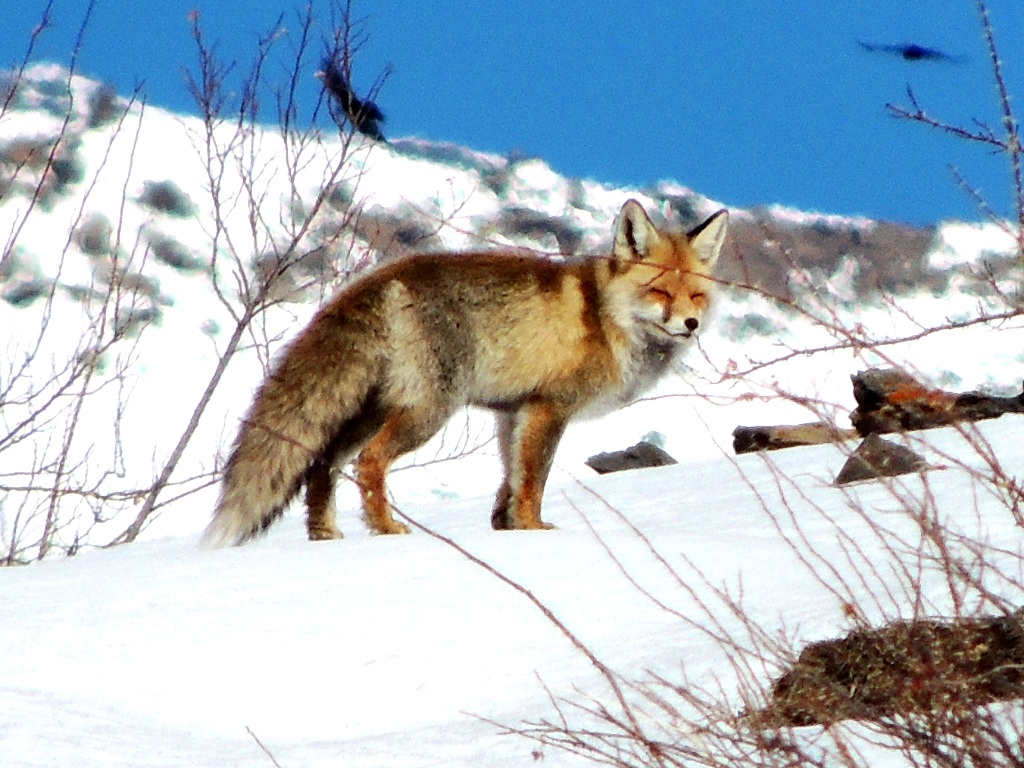| Common name |
Red fox |
| Latin name |
Vulpes vulpes Linnaeus 1758 |
| Local name |
|
| IUCN/WPA/Indian status |
Least concern/II/Occasional |
| Social unit |
Pairs , sometimes solitary occasionally in group up to six. |
| Size / weight |
59-90 cm (male) 45-58 cm ( female) TL ; 36-44 cm (male) 28-49 cm.(female) WT : 4-14 kg (male) 3-7 kg (female) |
| Description |
The most widely distributed carnivore in the world the Red fox is extremely variable in body colour and size . Indian red foxes have a representative of both the northern red fox and clade in the Himalayan fox and also the southern grey fox clade in the Kashmir fox and the desert fox both greyer smaller and more primitive foxes with longer legs and ear The Himalayan or hill fox is the common fox of the Himalayas east of Ladakh. |
| Behavior |
Foxes have a sub caudal gland on the upper parts of the tail that gives off a characteristics odour often referred to as foxy. |
| Distribution |
The Himalayas and trans Himalayas from Jammu & Kashmir to Sikkim and in the arid and semi arid areas of Rajasthan and Kutch Gujrat. |
| Habitat |
A very wide variety of habitats including arid and semi arid areas montane forests and areas close to human habitation within their distribution is used. Availability of food seems to be the major limiting factor in habitat suitability. |
| Best seen |
Himalayan hill stations , Kargil, Jammu & Kashmir, Kutch Gujrat |




